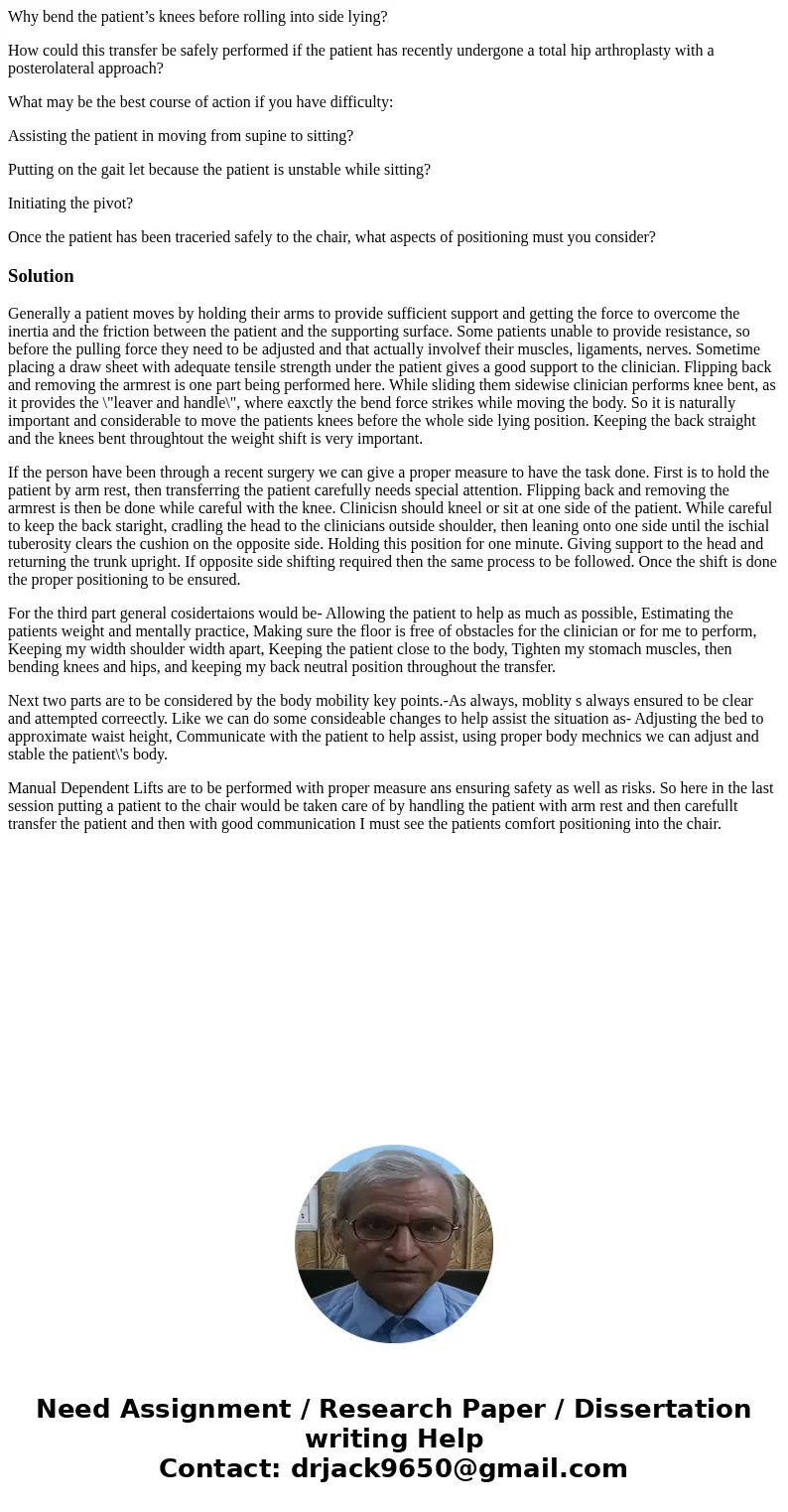Why bend the patients knees before rolling into side lying H
Why bend the patient’s knees before rolling into side lying?
How could this transfer be safely performed if the patient has recently undergone a total hip arthroplasty with a posterolateral approach?
What may be the best course of action if you have difficulty:
Assisting the patient in moving from supine to sitting?
Putting on the gait let because the patient is unstable while sitting?
Initiating the pivot?
Once the patient has been traceried safely to the chair, what aspects of positioning must you consider?
Solution
Generally a patient moves by holding their arms to provide sufficient support and getting the force to overcome the inertia and the friction between the patient and the supporting surface. Some patients unable to provide resistance, so before the pulling force they need to be adjusted and that actually involvef their muscles, ligaments, nerves. Sometime placing a draw sheet with adequate tensile strength under the patient gives a good support to the clinician. Flipping back and removing the armrest is one part being performed here. While sliding them sidewise clinician performs knee bent, as it provides the \"leaver and handle\", where eaxctly the bend force strikes while moving the body. So it is naturally important and considerable to move the patients knees before the whole side lying position. Keeping the back straight and the knees bent throughtout the weight shift is very important.
If the person have been through a recent surgery we can give a proper measure to have the task done. First is to hold the patient by arm rest, then transferring the patient carefully needs special attention. Flipping back and removing the armrest is then be done while careful with the knee. Clinicisn should kneel or sit at one side of the patient. While careful to keep the back staright, cradling the head to the clinicians outside shoulder, then leaning onto one side until the ischial tuberosity clears the cushion on the opposite side. Holding this position for one minute. Giving support to the head and returning the trunk upright. If opposite side shifting required then the same process to be followed. Once the shift is done the proper positioning to be ensured.
For the third part general cosidertaions would be- Allowing the patient to help as much as possible, Estimating the patients weight and mentally practice, Making sure the floor is free of obstacles for the clinician or for me to perform, Keeping my width shoulder width apart, Keeping the patient close to the body, Tighten my stomach muscles, then bending knees and hips, and keeping my back neutral position throughout the transfer.
Next two parts are to be considered by the body mobility key points.-As always, moblity s always ensured to be clear and attempted correectly. Like we can do some consideable changes to help assist the situation as- Adjusting the bed to approximate waist height, Communicate with the patient to help assist, using proper body mechnics we can adjust and stable the patient\'s body.
Manual Dependent Lifts are to be performed with proper measure ans ensuring safety as well as risks. So here in the last session putting a patient to the chair would be taken care of by handling the patient with arm rest and then carefullt transfer the patient and then with good communication I must see the patients comfort positioning into the chair.

 Homework Sourse
Homework Sourse